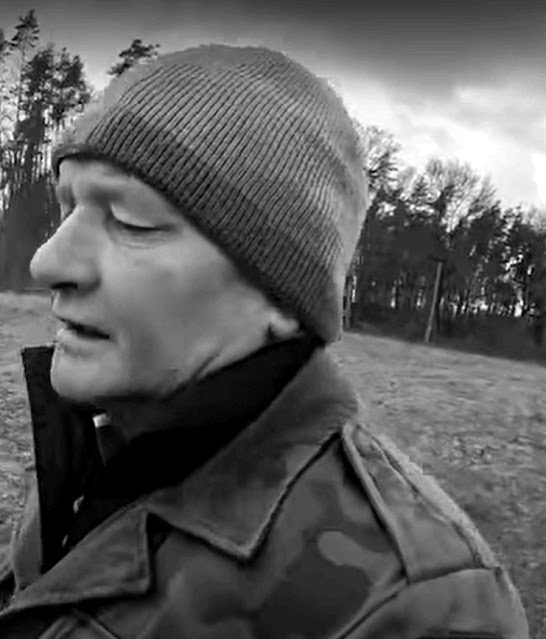Różne oblicza przemocy w rodzinie, nie można się temu poddawać!
Postanowiłam w końcu napisać o bardzo trudnym temacie jakim jest przemoc w rodzinie, najczęściej w stosunku do kobiet. Przy pisaniu korzystałam z materiałów PARPY, bo przemoc bardzo często wiąże się w różnymi uzależnieniami.
Na początku musicie Panie wiedzieć, że mówimy tylko o samej przemocy fizycznej, dla niektórych moich rozmówczyń gorsza jest przemoc psychiczna i poniżanie w obecności innych.
Przemoc fizyczna jest dość łatwa do zdefiniowania. To wszelkie formy wykorzystywania siły fizycznej jak wymierzanie klapsów czy ciągnięcie za włosy, aż do takich drastycznych jak cięcie skóry, przypalanie czy po prostu bicie.
Przemoc psychiczna to już bardziej skomplikowana sprawa. Nie wiem czy wiecie, ale jedną z form takiej przemocy jest wykorzystywanie emocjonalne. Np. osoba chora potrafi wykorzystywać swoją sytuację, by wzbudzić w partnerze/partnerce poczucie winy. To też przemoc psychiczna.
A inne formy to między innymi: zastraszanie, wyzywanie, poniżanie i upokarzanie, kontrolowanie zachowania i kontaktów, wyśmiewanie poglądów, pochodzenia, wykształcenia itp.
Przemoc seksualna polega na zmuszaniu do aktywności seksualnej wbrew woli drugiej osoby. Przymuszanie może polegać nie tylko na bezpośrednim użyciu sity fizycznej, ale również na groźbie użycia przemocy. Przemoc seksualna jest zatem tożsama ze znęcaniem się fizycznym i psychicznym.
Przemoc ekonomiczna polega na uzależnieniu od siebie partnera, poprzez ograniczenie dostępu do pieniędzy.
Kobieta musi prosić o najmniejsze środki, ma zakaz pracy zarobkowej, nie zna stanu finansowego rodziny.
Warto podkreślić, że ofiary rzadko doświadczają tylko jednego rodzaju przemocy, szacuje się, że co druga z nich doznaje więcej niż jednego rodzaju przemocy za strony partnera.
Drogie Panie, nie można dać się zastraszyć, trzeba reagować i szukać pomocy!
Dlaczego kobiety tak często rezygnują z pomocy, albo wycofują się z oskarżeń złożonych na policję?
Wynika to z cykliczności przemocy w związku. Przemoc taka, przechodzi zazwyczaj przez trzy fazy przemocy. Pierwsza to faza narastania napięcia. Między partnerami pojawia się napięcie, które nie opada pomimo podejmowanych przez kobietę prób jego złagodzenia. Później pojawia się eskalacja i w tej fazie partner wpada w szał, a kobieta zostaje poważnie poraniona. Jest to moment kiedy ofiara wzywa policję i kieruje oskarżenie.
Ale po takim incydencie, następuje spadek napięcia, a sprawca wyraża skruchę, przynosi kwiaty, prezenty, robi się miły. Taka faza określana mianem „miodowego miesiąca". Kobieta nabiera nadziei na zmianę na lepsze, przestaje szukać pomocy, wycofuje oskarżenie.
Ale potem ten sam cyklu powtarza się: napięcie, eskalacja i atak, okres miodowego miesiąca.
Pamiętajmy, na pierwszy cios, klaps, ograniczenie musi być reakcja!
Związek gdzie występuje przemoc trzeba natychmiast zakończyć. On się nie zmieni!
Google translate:
Finally, I decided to write about a very difficult topic, which is domestic violence, most often against women. When writing, I used PARPA's materials, because violence is very often associated with various addictions.
At the beginning, ladies, you must know that we are talking only about physical violence itself, for some of my interlocutors, psychological violence and humiliation in the presence of others are worse.
Physical violence is fairly easy to define. These are all forms of using physical force, such as spanking or pulling the hair, to such drastic as cutting the skin, burning or just beating.
Psychological abuse is a more complicated issue. I don't know if you know, but one of the forms of such violence is emotional abuse. For example, a sick person can use their situation to make their partner feel guilty. It is also psychological violence.
And other forms include: intimidation, name-calling, humiliation and humiliation, controlling behavior and contacts, ridiculing views, origin, education, etc.
Sexual violence is being forced into sexual activity against the will of another person. Coercion may consist not only in the direct use of physical force, but also in the threat of violence. Sexual abuse is therefore the same as physical and psychological abuse.
Economic violence is the dependence of a partner on himself by limiting access to money.
A woman has to ask for the smallest resources, she is forbidden to work, does not know the financial condition of the family.
It is worth emphasizing that the victims rarely experience only one type of violence, it is estimated that every second of them experiences more than one type of violence by their partner.
Ladies, don't get intimidated, you have to react and seek help!
Why do women so often choose not to help or withdraw from charges against the police?
This is due to the cyclical nature of violence in a relationship. Such violence usually goes through three stages of violence. The first is the tension build-up phase. There is a tension between the partners that does not subside despite the woman's attempts to alleviate it. Later, an escalation occurs, and in this phase, the partner goes berserk and the woman is seriously injured. This is the moment when the victim calls the police and makes the indictment.
But after such an incident, the tension drops, and the perpetrator repents, brings flowers, presents, gets nice. This phase is known as the "honeymoon". The woman gains hope for a change for the better, stops looking for help, and withdraws the accusation.
But then the same cycle repeats itself: tension, escalation and attack, the honeymoon period.
Remember, the first blow, slap, limitation must be a reaction!
A violent relationship must be ended immediately. He will not change!








Komentarze
Prześlij komentarz